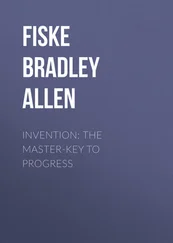He handed the torch to the woman, and, tipping the contents of the cement bag out onto the floor, began to shovel it into a mound. Some of the cement had already set into hard lumps, but by dint of shovelling and flattening, he was at last able to form a little peak. Taking a little tin, he made several trips to the tap and, filling it each time, poured the water onto the cement. Every time he turned the tap on, the pipes rattled and wheezed alarmingly. But, nervewracking as this was for both of them, he persevered and at last the cement began to soften and crumble into a sludge. The woman opened the bag. The child was invisible under the blankets. She began to shovel the liquid cement into the bag; when it was full, she closed it and placing her hands on it spoke gently:
‘What a beautiful coffin we have made!’
‘Yes—it’s quite conceivable that the body will never decay,’ replied the man in a low voice. Although his face was running with sweat so that he could hardly keep his eyes open, he could waste no time before picking up the bag and hauling it to the centre of the bath. The woman drew a handkerchief from her bosom and mopped his brow. Then the two of them dragged the bag, which had become enormously heavy because of the cement, to the hole, which proved to be too narrow to accept it. Regardless of the noise, the man seized the pick and widened it where necessary. He knelt in the bath and crammed the bag in. It only remained to fill the hole with cement; the woman helped him; when it was full, they pressed the cement level with their bare hands, which turned red and raw as a result.
Then they carefully laid tiles to hide the cement. They were so engrossed by their labours that they failed to notice that a third person was hiding in the shadows and watching them.
The visitors’ book
When the ‘K Apartments for Ladies’ were first opened, various strict regulations were ordained to govern the behaviour of the young residents. Nowadays, however, they had all reached mature years, and most of the rules had become a dead letter. But some had acquired the force of precedent and continued to be observed, the chief and most strictly observed of which was that it remained absolutely forbidden for members of the opposite sex to stay overnight in the apartments. Females could spend the night there provided they first reported to the reception desk.
But most of the occupants had become old maids, living isolated lives without friends or acquaintances, and so since the end of the war it had become rare for outsiders to visit or stay the night. All of which being so, there was still nothing so very suspicious about the entry in the visitors’ book showing that Chikako Ueda, Room 502, had a close relative staying with her during the nights of 29 March to 1 April 1951.
The name of the guest was Miss Yasuyo Aoki.
Years later, when the police were looking into the matter of this female cousin, they questioned both of the receptionists. Their memories were by then hazy, but their testimonies agreed on one point—without question she was a woman.
One of the receptionists, Katsuko Tojo, having testified that she was on duty at the time that Chikako Ueda first brought her cousin to the apartment, went on as follows:
‘I’m quite sure that Miss Ueda told me that her cousin would be staying with her for a fortnight. Yes, of course it was Miss Ueda who filled in the visitors’ book, while her cousin just stood gazing out of the window. I don’t particularly remember exchanging any conversation with her. Maybe it was her clothing, or perhaps they said she was from the Snow Country, but anyway she certainly had a rustic look… yes, that’s it, she had a red muffler wrapped round her head. From the next day, Miss Ueda came to the office alone and filled in the visitors’ book. Well, it’s merely a formality—no need for the guest to come and do it herself. But after three days, she stopped coming. I never set eyes on the cousin again—she must have left about that time, I just can’t remember, it must have been when Tamura was on duty.’
Katsuko Tojo went on to cover herself by adding that as she had a bad leg, and could only move with the aid of a stick, she was largely confined to her seat when on duty and so could not really tell what was going on.
Her partner, Kaneko Tamura, testified as follows:
‘You ask me if I remember Miss Ueda’s cousin carrying a large bag? Please excuse me—my memory’s got so bad recently. I even forgot to pass on a telephone message yesterday, and the representative of the third floor is on to me about it! Well, if I can’t even remember a telephone call, you can imagine how little confidence I have in my memory nowadays. So you can see why I can’t remember about Miss Ueda’s younger cousin seven years back. Oh—excuse me—I do remember something after all. She was strikingly pretty. Deliciously chubby, and very fair-skinned—but I’m not sure, really.’
The sum of the evidence given by the two women amounted to no more than the fact that, as the person in question was dressed like a woman and looked like one, it seemed unlikely that anyone would have taken her for a man.
The newspaper article
The story of the kidnapping of George, only son of Major and Mrs D. Kraft, aged four, did not break in the press until about the middle of April 1951.
The kidnapping took place on 27 March; the reason it was not made public until over a fortnight later was that the parents did not at first inform the police, but negotiated with the criminals secretly. They agreed to pay the ransom in two parts, the child to be returned on receipt of the second half. This was indeed an arrangement to the advantage of the kidnappers.
At least, that is what Major Kraft said, but as there were no witnesses, who could be sure of it? Because it appears that after arranging on the telephone for Major Kraft to deliver three hundred thousand yen to a certain spot (and he has never revealed where) the criminals broke off all further contact, although the Major persistently sought to re-contact them by advertising in the press. For several days, he inserted a three-line advertisement in every major daily paper:
‘Keep your promise. I will keep mine. D. Kraft.’
This caught the attention of a certain journalist, who was thus able to scoop the kidnapping. But even after the fact became widely publicised, the Major resolutely refused to call in the Japanese police. Instead, he gave an interview to the press and his message appeared beside a photograph of him and his wife.
‘All I want is to have the child back. I absolutely will not call in the police. I will carry out my promise completely—you do the same.’
They looked haggard. It seemed as if the Major was prepared to trust the kidnappers to the very last. Inevitably, the tragic sight of this gentlemanly foreign officer won people’s sympathy. Moreover, it was plain from his attitude that he believed the criminals to be Japanese. This was clear from his reply to the persistent questioning of a journalist when he revealed that the telephone message was in broken English; also, his advertisements were written in Japanese, and he had not placed them in the English-language papers.
Another interesting point was that Mrs Kraft was a Japanese. Her maiden name was Keiko Kawauchi, then aged twenty-four, and she had met her husband while working in the Ginza PX. It was a typical example of a mixed marriage at the time.
But after a little, public interest evaporated like the melting snows of spring.
It never became clear why Major Kraft so obstinately refused to call in the police, or take more positive steps at the time of the kidnapping, but it is known that one year later he divorced Keiko Kawauchi and returned to the United States. It was also strange that the Military Occupation authorities were completely silent about the whole matter.
Читать дальше












